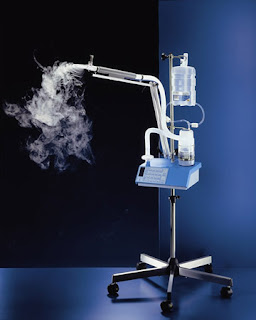10 questions to ask your doctor about headaches by MedicineNet.com: "Headache is defined as pain in the head that is located above the eyes or the ears, behind the head (occipital), or in the back of the upper neck. Headache, like chest pain or dizziness, has many causes. There are two types of headaches: primary headaches and secondary headaches. Primary headaches are not associated with (caused by) other diseases. Examples of primary headaches are migraine headaches, tension headaches, and cluster headaches. Secondary headaches are caused by associated diseases such as brain tumors, strokes, meningitis, subarachnoid hemorrhages, caffeine withdrawal, or discontinuation of analgesics. In rare occasions, headaches may signal heart attacks.
Establishing the diagnosis of the headache, arriving at effective treatment(s) for the headache, and taking measures to prevent or reduce headache episodes will require cooperation between you and your doctor. Following are suggestions on how to work with your doctor in diagnosing and managing your headaches.
How Can I Help My Doctor?
Pay attention to your symptom(s) so you can describe your condition as accurately as possible:
What are your headache location, duration, severity (worst ever headache?), and character (dull, sharp, throbbing, etc.)?
What brings them on (for example, certain foods, stress, bright light, fasting, or sleep disturbances)?
What aggravates them (exertion, coughing, bending, or sexual activity)?
What relieves them?
How long have you had these headaches? Have you had these headaches since childhood?
How frequently do you get headaches? Do they occur on weekdays? Weekends?
Are headaches related to menstruation?
Do other family members have similar headaches?
Are headaches often preceded by warning symptoms such as fatigue, yawning, sleepiness, or euphoria?
Are your headaches associated with visual disturbances, nausea, vomiting, pallor, cold hands and feet, seizures, weakness or unusual sensations of the arm or leg, unsteady gait, slurred speech, or fever?
Has there been a recent head trauma or a fall?
Prepare a list of all your medications, medical conditions, and surgeries.
Include all prescription and nonprescription medications, supplements, vitamins, herbs, and minerals. You might bring them with you to show your doctor. This will help answer any questions your doctor may have about your medications and dosages.
List prior and current medical conditions such as diabetes, high blood pressure, heart attacks, or cancers.
List prior surgeries (appendectomy, hysterectomy, knee replacement, etc.), procedures (colonoscopy, mammography, upper GI x-rays, etc.), and hospitalizations. Bring any hospitalization records and procedure reports in your possession.
10 Important Questions to Ask Your Doctor
- What do you think is causing my headaches?
- Is there more than one condition (disease) that could be causing my headaches?
- What tests will you do to diagnose my headaches?
- How accurate are the tests?
- How safe are the tests?
- What is the likely course of my condition? What is the long-term prognosis?
- What are my treatment options? How effective is each treatment option? What are the benefits versus the risks of each treatment option?
- If my symptoms worsen, what should I do on my own? When should I contact you?
- Are you aware of each of the medications that I am taking? Can they adversely interact with the medications you are prescribing for me?
- Should we monitor for side effects of the medications that you are prescribing or for their interactions with other medications I am taking?
How About Follow-up Care?
Arriving at an accurate diagnosis and optimal treatment often takes time and may require repeated visits and tests. Be patient and communicate with your doctor. Here are some suggestions:
- Do not stop taking prescribed medications on your own. If your prescription runs out, ask your doctor whether you should obtain a refill.
- If the prescribed treatment is not helping you, or is causing side effects, inform your doctor right away. He/she may have to rethink the diagnosis and/or change the treatment.
- If the doctor cannot offer you a firm diagnosis or help you with your symptoms despite repeated visits, it is OK to ask for another opinion. Most doctors will be glad to help their patients solicit second opinions or specialty consultations.
- Always ask your doctor about your test results. Never assume that everything must be fine if you do not hear from the doctor's office.
- Inform your doctor if you are using alternative medicine or non-prescription remedies, because some of these remedies may interact with your prescribed medications.
- Educate yourself with credible and authoritative medical information. Increasing your own knowledge about the characteristics of your particular condition, your medications, and their side effects can benefit you, your family, and your doctor. Information about your condition may be provided by your doctor. You can also find valuable information on the Internet. Be certain to look for credible Web sites.
- Sent using Google Toolbar"









